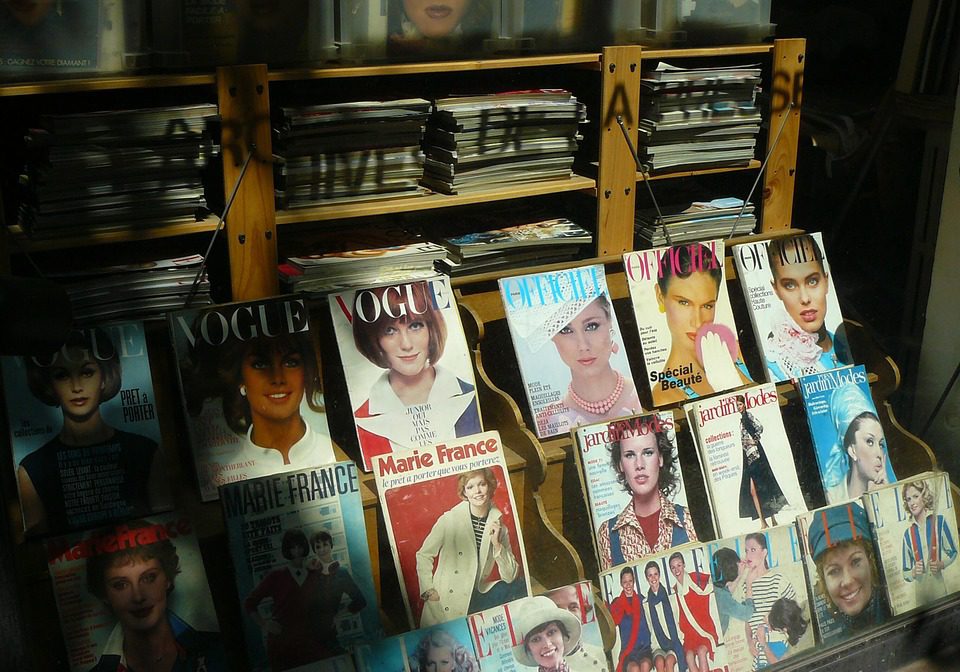“…Of all the lies that attempt to keep women in their place, the dismissal of beauty and fashion as fluff ranks high on my BS list…”—Carley Fortune, executive editor of Refinery29 Canada, in her first letter from the editor.
And with that bold declaration, it has become vividly clear that a more in-your-face embrace of politics, diversity, activism, and more has enlivened the editorial direction of women’s publications young and old. It’s a far cry from the world of fashion that Doris Anderson inhabited in the years that she led Chatelaine from 1957 to 1977. As an example, as summarized in Tessa Jordan’s essay “Branching Out: Second-Wave Feminist Periodicals and the Archive of Canadian Women’s Writing,” Anderson’s quasi-autobiographical 1981 novel Rough Layout tells the story of a woman magazine editor who wishes to publish more feminist content but encounters several roadblocks due to management and advertiser influence.
Anderson’s novel reflects the reality of how editors of women’s magazines had to be careful about how they introduced stories about second-wave feminism.
We see new realities in the case of Elaine Welteroth, after she was appointed editor-in-chief of Teen Vogue and became both the youngest person and second Black person to hold the position at Condé Nast, the company that owns Teen Vogue.
Welteroth played a significant role in reshaping the publication. Once viewed as a juvenile Vogue, Welteroth’s direction made the magazine more politically engaged, including consistent coverage of the Trump administration and generally giving more space to feminist issues.
Even though she left the position almost a year ago, Teen Vogue is still widely considered a publication which young politically informed people can turn to consume news.
It’s not to say women’s fashion magazines have never touched on politics or social justice before. Anderson is renowned as a Canadian feminist icon for, altering the mission of the magazine to focus on issues such as abortion legalization and female sexuality, among many other topics relevant in the era of second-wave feminism, according to Library and Archives Canada.
Jordan writes that in the 1960s, “increasing numbers of women began to establish feminist presses, publishing houses, periodicals, and bookstores as ways of countering women’s exploitation in the mainstream media and as a reflection of the common belief, despite ideological differences among feminists, in the power of the printed word.”
Chatelaine, Flare, and Fashion Magazine are examples of Canadian publications targeted at women that blend lifestyle, fashion, beauty, and food content. The publications also have in-depth features and essays ranging from the #MeToo movement, anti-abortion protests in Ontario, and Doug Ford.
In today’s climate, how do these publications have their voices heard while continuing to maintain their fashion roots? Can the two co-exist in the same space?
“What you might consider as being men’s interests, things like sports or car racing, those things can coexist very easily with news and politics, whether it’s Esquire or GQ,” says Pahull Bains, associate editor at Fashion. “They can just as easily coexist in women’s magazines.”
Bains, who has also worked in fashion at Vogue India but focuses on culture, says publications should not underestimate the vast interests of women readers, something that journalist and author Anne T. Donahue echoes.
“I think the more discourse we’re having about these topics and the way the internet’s kind of broken the mould in terms of having to limit conversations, I think we’ve finally began to see that it’s all quite related,” she says. “Why can’t fashion be feminist?”
Donahue also highlights the bigger discussions pop culture can lead into and how it is not all vapid. “Even Ms. Magazine in its incarnation was political, but still left room for conversations about pop culture,” she says. “I think our mistake is seeing things like fashion as something frivolous or something lowbrow or not worthy of a bigger conversation. Because those things are worthy of any conversation and are also the gateways to bigger conversations.”
The online realm of journalism may also play a part in the shift in content. Flare discontinued the production of its print editions in 2016 and is now solely online.
“Maybe 10 to 15 years ago, when we didn’t have that, and print magazines were being worked on three months in advance,” says Bains. “You didn’t have the luxury of being able to respond to what was happening. So now, in real time, we can respond to all of these big cultural and political movements that are happening.”
The emergence of feminism as a brand, and in some cases a product that can be endorsed and sold by celebrities, can arise as a potential cash grab for some publications to capitalize on, bringing in the question of authenticity. Bains says that noticing the small details of a publication over time is a possible way for readers to be aware of magazines taking advantage of the popularity of feminist content, such as token stories once a week about whichever public discussion is occurring at the time or sexist captions on social media that do not match the content being produced.
To many, women’s fashion magazines are no longer only about surface-level fashion and beauty listicles, but that is not to say that they don’t have a place in media either. Multitudes of content are able to exist in such publications, just like the readers consuming it.
“I think as women are fighting back against so many of these rules and systems that have been in place for so long, we’re also fighting back against these stereotypical notions of what it is that women are allowed to find interesting,” says Bains, “because we can find many things interesting at once.”
About the author
Eye on Diversity Reporter and copy editor. She/her. Twitter: @jord_currie
